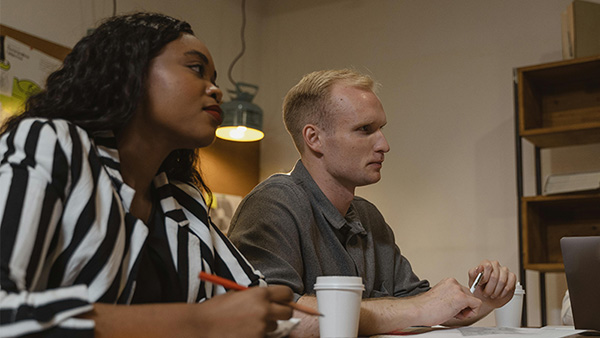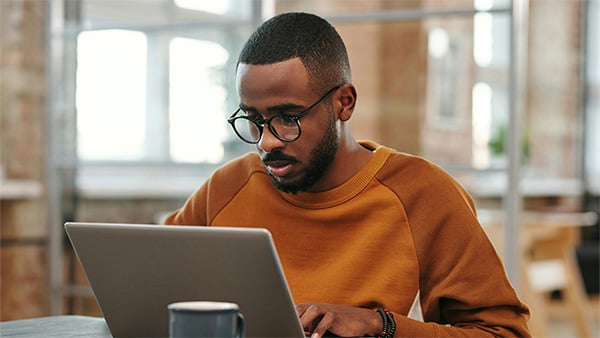A sunny, bank holiday update from Vestd
This article is over five years old. Some information may no longer be current. Our product team works hard to make your life easier and we’ve...
Manage your equity and shareholders
Share schemes & options
Equity management
Migrate to Vestd
Company valuations
Fundraising
Launch funds, evalute deals & invest
Special Purpose Vehicles (SPV)
Manage your portfolio
Model future scenarios
Powerful tools and five-star support
Employee share schemes
Predictable pricing and no hidden charges
For startups
For scaleups & SMEs
For larger companies
Ideas, insight and tools to help you grow

Have you ever considered how your office’s design affects your employees? If not, you should. Here’s why:
So, a good office design brings real benefits. But how can you improve yours?
I once worked in an office with the blandest decor I’d ever seen. White walls. Blue carpets. No pictures. No quirks. No plants. Nothing you might consider ‘flair’.
And it was tough. But we only realised how tough after the MD had a change of heart. He brought a team in to decorate the office - and it changed everything.
Suddenly, we had green and orange walls. We had plants. We even had beanbags and free snacks.
And the effect on my own employee experience was amazing.
I didn’t feel like I was working in a bland corporate hellhole anymore. The office became cosier, more comfortable, and - yes - more conducive to creativity.
Now. Think about your own office. Do you inflict a clinical combo of white and blue (or even grey) upon your poor workers? Do you ignore their pleas to mix things up for fear of wasting money?
If you answer ‘yes’ to either question, now’s the time to change. And here’s why.
Colour affects our mood in different ways:
The right combination of hues can inspire more socialisation, productivity and relaxation.
Try pastel blue and yellow for high-pressure workplaces. Add orange, green or red to meeting rooms to promote better communication.
And a touch of purple works wonders in a break-out area too.
Isn’t it amazing what a tin of paint can do?
Collaboration is fundamental for any successful company. But it’s easier said than done.
Your first instinct may be to embrace an open layout. And that makes sense. They look ideal for a collaborative culture, especially if your employees hate being stuck in cubicles.
Yet open-plan offices may actually have a negative effect on the employee experience and reduce teamwork.
How so? Talent Works’ research reveals the length of time dedicated to face-to-face conversations dropped by 73%. This increased reliance on emails/messaging by more than 67% overall.
That’s hardly ideal if your brand favours cooperation and close working relationships. But these stats don’t need to be a death knell for open layouts.
You just need to strike the right balance.
What is ‘the right balance’?
Create dedicated spaces for different tasks — discussing projects, communicating with clients, relaxing, eating, researching, etc.
Your employees need room to chat, share ideas and bond. But quiet areas conducive to concentration and hard work matter too.
Setting up different areas can be difficult in small offices. But do what you can to give everyone the space to perform at their best.
And don’t restrict employees’ working habits. They don’t need to sit at the same desk for eight hours a day. Let them go where they like to get the job done.
Maybe they want to stand at a high desk for a while to prevent backache. Perhaps they prefer to lounge on a beanbag with their headphones on and zone the world out.
Or they might take their laptop to a coffee shop down the street for an hour or so.
Treat your employees like adults and be more flexible. Don’t fill your office with endless rows of identical tables and chairs just because you think that’s how ‘serious’ workplaces look.
Don’t let your office get stale.
Employees may find they need another meeting space or quiet rooms. They might tire of the colour scheme or find being so close to certain colleagues distracting. Always be willing to adapt and revise.
Noisy conversations, bad habits, inadequate facilities and clutter can all harm the employee experience. Never expect workers to ‘just get on with it’ in an uncomfortable office.
They’ll feel undervalued and frustrated if they believe you don’t care about them as people.
Discuss possibilities with your team — they’re the ones who use the office most, after all.
Invite feedback on everything related to the workplace design — decor, layout, facilities, etc. Keep it anonymous to encourage honesty. Some employees might be wary of voicing their opinions for fear of being viewed as a troublemakers.
Integrate good ideas. Ask for further elaboration if need be. Show your workers you respect their contributions and care about their happiness.
In short: focus on creating an office your team looks forward to working in each day.
And don’t forget how impressed clients will be during visits either. A good first meeting is crucial to achieve customer success, and a stylish, creative office can help you do that.
Successful businesses rely on hard work and commitment. It’s hard to expect this from employees when you subject them to a lifeless, uncomfortable workplace.
They may resent their surroundings, their job and - ultimately - you. And that means they’ll walk, possibly to a competitor.
Invest in creating the ideal office design for your team. You may see real results that make a lasting impact on your business’s success.

This article is over five years old. Some information may no longer be current. Our product team works hard to make your life easier and we’ve...

You can offer a generous salary, ping-pong tables, and Friday drinks, but if your team doesn’t feel trusted, challenged, or inspired by the work...

Perks don’t keep people. Purposeful work does.